|
Published on Archi.ru (https://archi.ru) |
|
| 25.07.2024 | |
|
Hide and Seek |
|
|
Julia Tarabarina |
|
| Architect: | |
| Stepan Liphart | |
| Studio: | |
| Liphart Architects | |
|
The ID Moskovskiy house, designed by Stepan Liphart in St. Petersburg, in the courtyards near Moskovskiy Avenue beyond the Obvodny Canal and recently completed, is notable for several reasons. Firstly, it has been realized with considerable accuracy, which is particularly significant as this is the first building where the architect was responsible not only for the facades but also for the layouts, allowing for better integration between the two. On the other hand, this building is interesting as an example of the “germination” of new architecture in the city: it draws on the best examples from the neighborhood and becomes an improved and developed sum of ideas found by the architect in the surrounding context. We have already shared about the ID Moskovskiy project, designed in 2020: two residential buildings with a kindergarten and commercial premises on the ground floors are located in a spacious courtyard on Moskovskiy Avenue, close to the “gray belt”, yet beyond the Obvodny Canal. There is currently intensive construction in this area, with the part of former industrial zones closest to the center being actively developed, and Moskovskiy is one of the most intimate and delicate participants in this renewal process. It is built on the site of the former Research Institute of High-Frequency Currents; its name comes from the avenue, and the ID prefix from the developer Euroinvest Development. ID MoskovskiyCopyright: Photograph © Alexey Naroditsky / provided by Liphart ArchitectsWhat’s also very significant is the fact that the realization matches the original design quite well, as can be seen when comparing a couple of perspectives. It’s not always that an architect can proudly compare a rendering to a photograph and say, “Look, no differences!” But here, it is precisely the case. 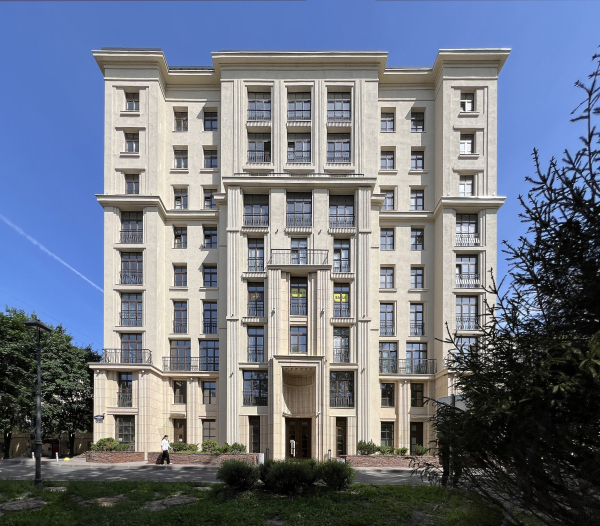 ID MoskovskiyCopyright: Photograph © Liphart Architects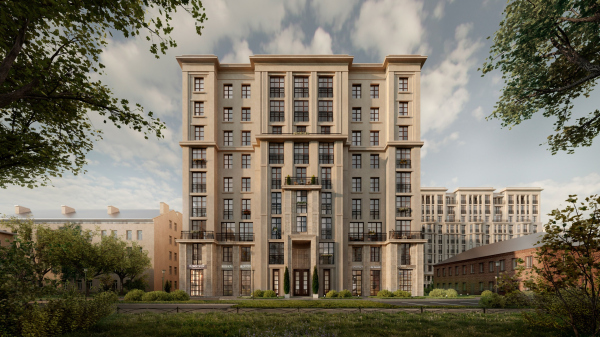 Section 1, view from the west. ID MoskovskiyCopyright: © Liphart Architects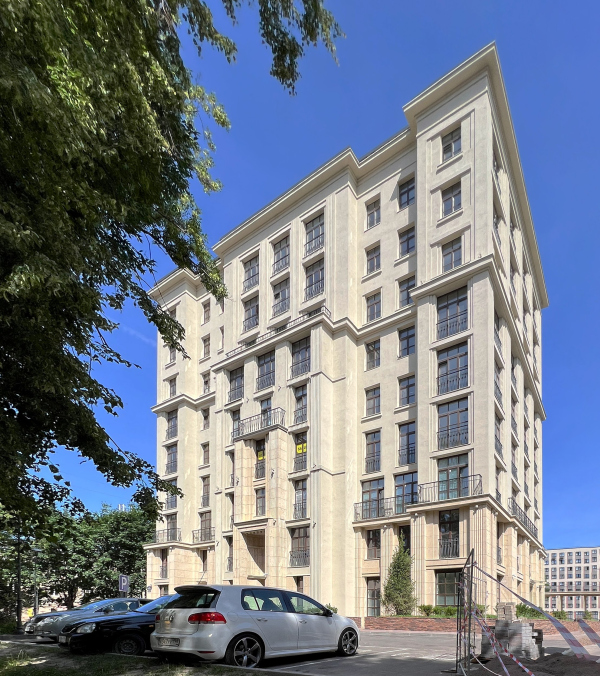 ID MoskovskiyCopyright: Photograph © Liphart Architects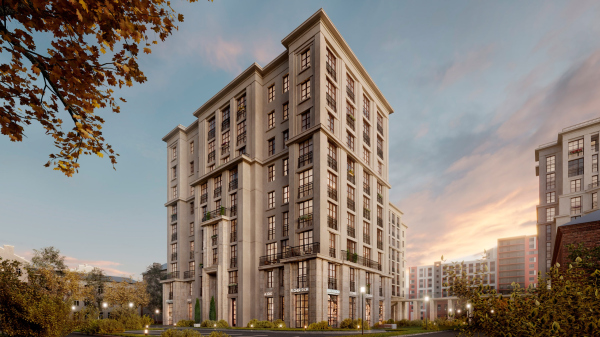 View of Section 1 from the southwest side. ID MoskovskiyCopyright: © Liphart ArchitectsThe intrigue is that the buildings stand in a courtyard formed by inexpensive 19th-century tenement houses of approximately equal size and post-war “Stalinist” buildings, one of which has a faint imprint of memories of St. Petersburg neoclassicism, though not very distinct. Mostly, these buildings are surrounded by the fairly economical architecture of their time, easily explained by the former semi-industrial status of the area. The truth is that until the 21st century, this was not a very expensive place. Now, everything is different! New neighborhoods are growing here, not exactly ultra-high-end (it’s still not the very center of the city!), but still quite modern. The status of the place is changing; it has already noticeably changed. Recently built houses are also nearby, to the south and southeast. However, ID Moskovskiy, although also part of recent development, behaves differently: it is noticeably more conservative than its new surroundings, which are either too flashy, or too tall, or somewhat standardized and predictable. ID Moskovskiy – with a touch of snobbery – “communicates” more with the nearby historical contour. However, the complex “communicates” in its own way, and on a new level, too: it hides in the courtyard behind trees, cars, and garages, but despite its declared restraint, it is noticeably more representative than the outer contour that surrounds it. Amid the untidiness of courtyard life, the building stands confidently and rhythmically, maintaining its dignity. It’s a true hidden gem that is not easy to find, and when you do find it, it does a thorough job of surprising you. From its semi-classical surroundings, the building extracts important motifs and develops them in its own unique style. 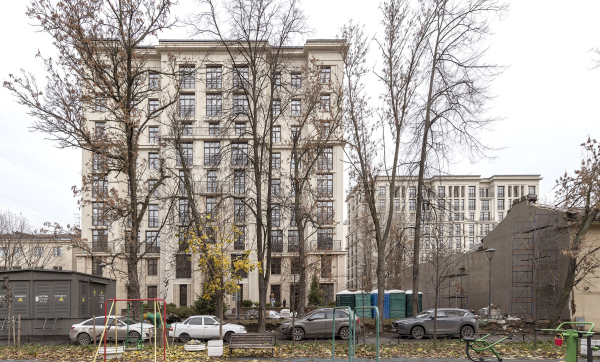 ID MoskovskiyCopyright: Photograph © Alexey Naroditsky / provided by Liphart Architects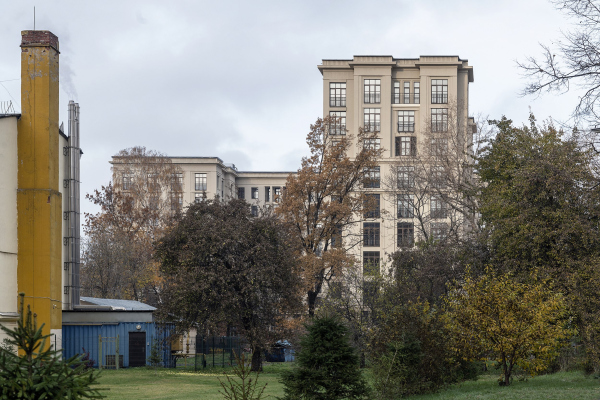 ID MoskovskiyCopyright: Photograph © Alexey Naroditsky / provided by Liphart ArchitectsIf you enter through the archway of the 1953 building by architect Lev Kosven – which is one of the “decorated” ones here, reminiscent of neoclassicism, with garlands above the arch, triple windows, and a niche... – what you will see is a side façade of Moskovskiy, but this façade is nonetheless the main one! It doesn’t exactly repeat Kosven’s composition but it definitely resonates with it: for example, the high niche that spans two floors above the entrance finds an echo in the composition of the new building’s end façade. However, the garlands are out of the equation now, while the plasticity and rhythm in “Moskovskiy”, especially in its façade facing the avenue, increase. The windows are larger, the pilasters with fluted grooves are layered at the edges, as Art Deco likes, and the surface is even more complex. Kosven’s building has quite a lot of flat surfaces, albeit covered with thin stucco rustication – here, however, there are fewer flat surfaces and more windows. Is it due to the dialogue with its neighbor on the avenue that the composition with three risalits arises? Kosven’s building lacks a central risalit for some reason, but the side risalits are very accentuated. And is that why the main facade of “Moskovskiy” has more flat surfaces than the others, the side ones? It’s interesting how the grand façade is formed here – by the principle of “facing the avenue”. It greets the person entering from the important part of the city, which is why it’s the main one, although if you look at the plan, it is “attached” to the elongated building from the side. The classical symmetry on this façade is very pronounced, it is strictly built, but from the point of view of the composition of the entire volume and the complex as a whole – it is freely built, based on the features of the site and the urban context; asymmetrically. It also flexibly responds to the opportunities provided by the site. The most interesting feature of the main façade is the entrance portal. The portal is two stories high, with its frame extended far forward, and in plan, it forms an exedra, a semicircular niche, though without the hemisphere. This is a rare, unexpected solution, harking back to Art Deco, and is characteristic of Stepan Liphart’s signature style: he usually extends the entrance groups vertically as much as possible, making them highly sculptural. Entrances are a distinctive signature technique in Stepan Liphart’s buildings. 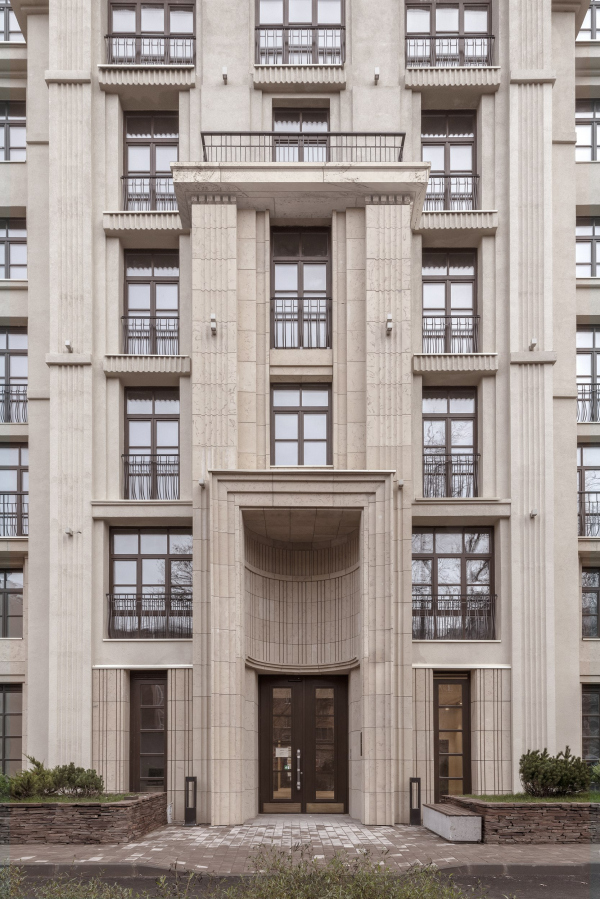 ID MoskovskiyCopyright: Photograph © Alexey Naroditsky / provided by Liphart Architects ID MoskovskiyCopyright: Photograph © Alexey Naroditsky / provided by Liphart ArchitectsñUnfortunately, the architect’s design for the lobby interior was not realized, and the semicircle of the recession was laid out somewhat carelessly by the builders. Where are the master craftsmen of the 1910s? The second entrance, the one in the extended section, echoes the first but without the round recession, although a row of semicircular grooves appears at the top. These grooves are almost like fluting, and this motif continues in other parts of the building visible to pedestrians. 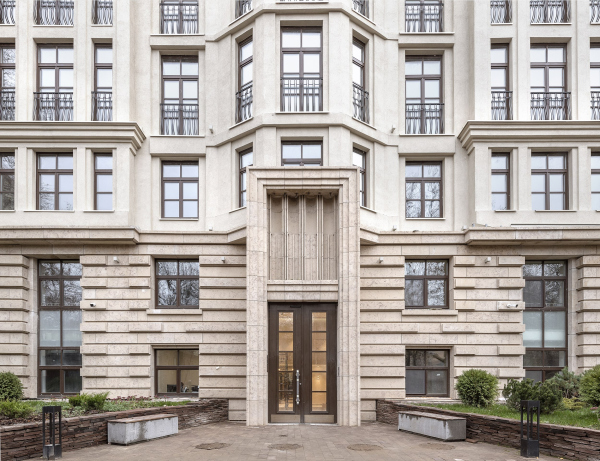 ID MoskovskiyCopyright: Photograph © Alexey Naroditsky / provided by Liphart Architects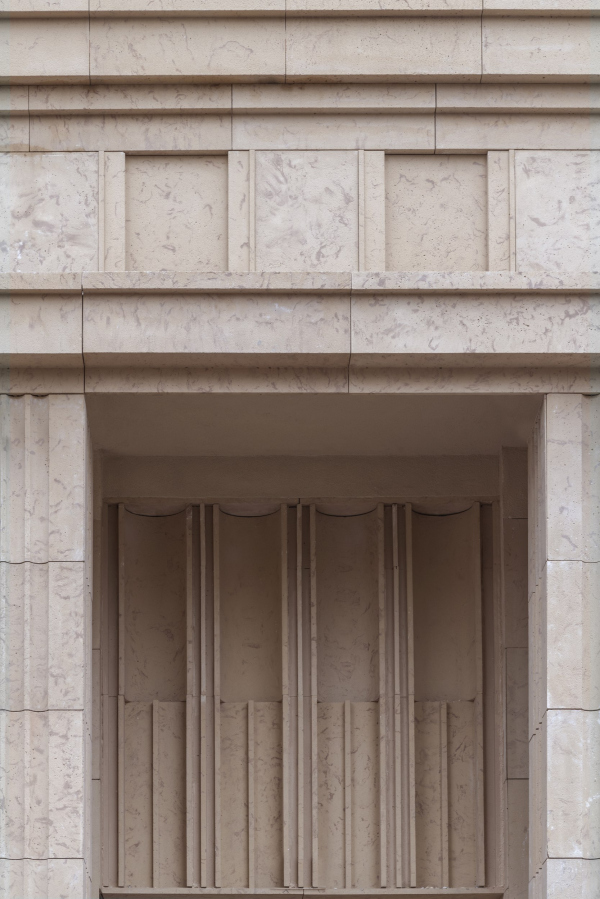 ID MoskovskiyCopyright: Photograph © Alexey Naroditsky / provided by Liphart ArchitectsThis detail is also atypical for our time, which seems to be fascinated by Art Deco but often perceives it superficially as a market product. Frames, cornices, finials – and that’s pretty much it. Stepan Liphart, however, generally goes further in his reincarnations of the 1930s style, as he has long been fascinated by studying the subject. Another important and realized part of the complex is the colonnade connecting the two buildings. People can walk there, a staircase from the lobby leads to its upper tier, and below one can take shelter from the rain. The gallery zones the courtyard, dividing it into two parts. 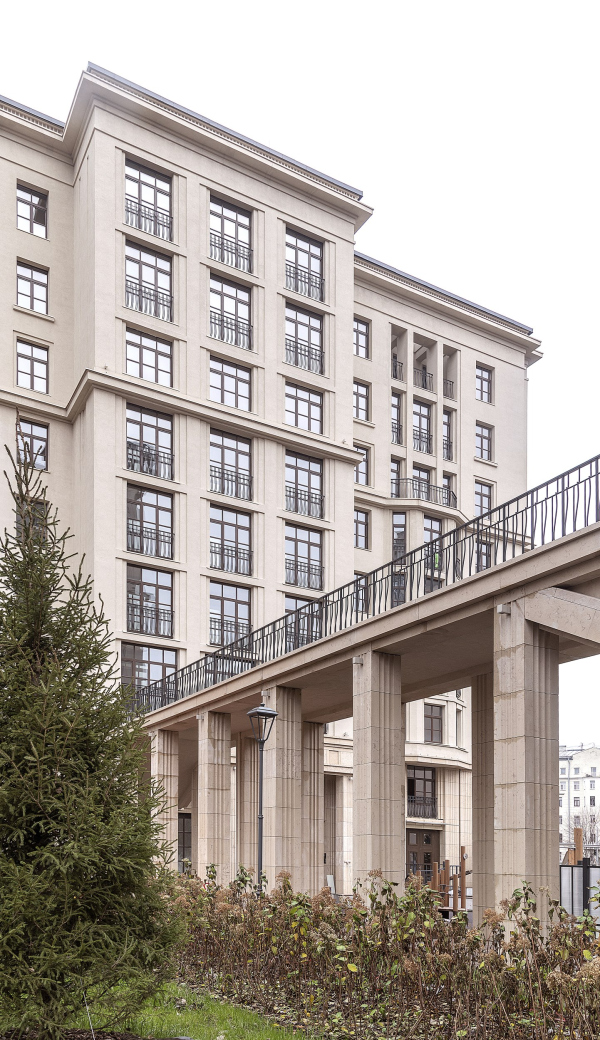 ID MoskovskiyCopyright: Photograph © Alexey Naroditsky / provided by Liphart Architects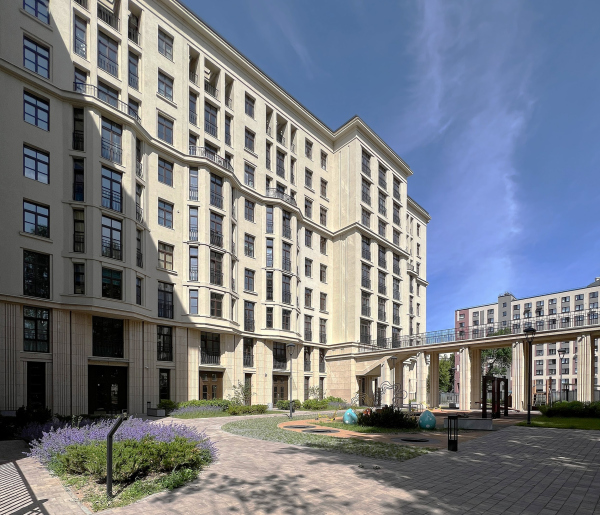 ID MoskovskiyCopyright: Photograph © Liphart ArchitectsFrom the above, it is evident that the façade plasticity is diverse and varies within the given theme from façade to façade, but only in nuances. Facing the avenue is a “palace” while the courtyard is overlooked by a “tenement house”, but… tenement houses of the 19th and early 20th centuries never had such courtyard facades. Here, the courtyard façade is really more like a street façade. It looks like it has been turned inside out: a house placed in the middle of the yard would historically likely have been very simple and inexpensive; but now it is the other way around. Facades of a street-like appearance, and more representative than those nearby on the street itself, ended up in the courtyard. This is how it historically turned out, like a coat worn inside out. But nowadays, not everyone knows how coats were historically worn, and what seemed strange has changed in commonly accepted notions several times, so a more “ceremonial” house behind a restrained front on the red line also appears quite normal. The lower tier of the facades is made of glass-fiber-reinforced concrete imitating sandstone, while the upper part is plastered. This, by the way, should be acknowledged as normal for St. Petersburg: surprising as it may seem, there are not many historical buildings that are really made of stone. The plastique is rich in all the parts of the complex, but in the lower tier, there are more elements designed to be viewed up close, especially many flutes with regular-shaped semicircular grooves. They are echoed by rustication, interestingly with two levels of relief – protruding stones. Above, there are predominant layered ledges alternating with metal grilles, whose volute-like curves unexpectedly recall the Biedermeier style, which is earlier than Art Deco, from the mid-19th century, subtly softening the rigidity of the dominant straight lines. In short, there are a lot of interesting things to examine here. 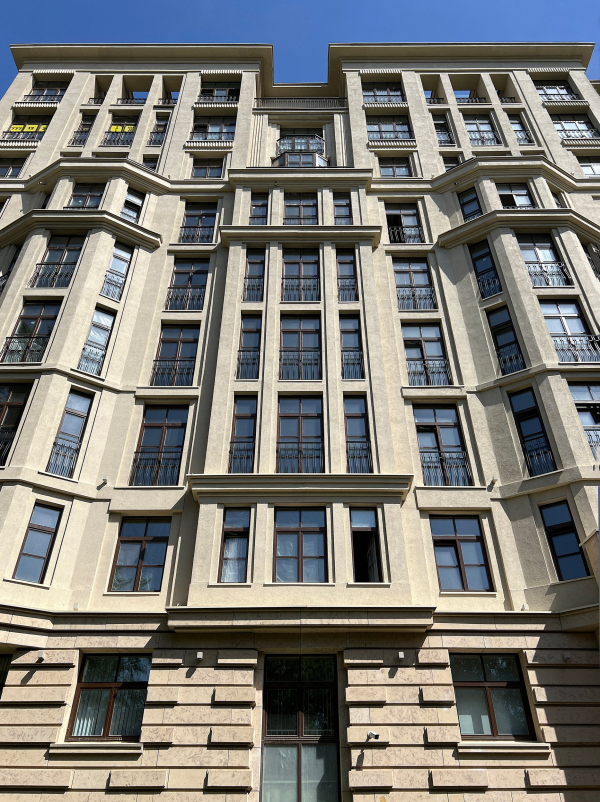 ID MoskovskiyCopyright: Photograph © Liphart Architects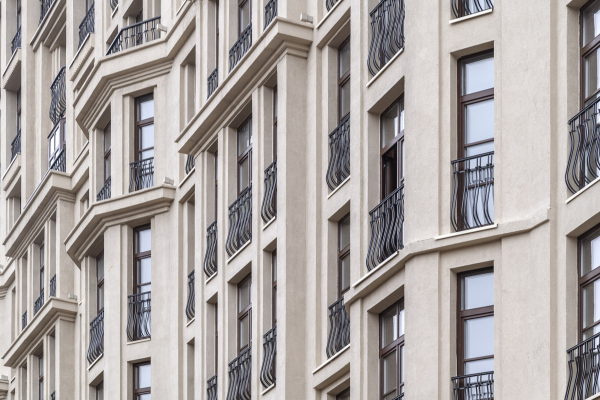 ID MoskovskiyCopyright: Photograph © Alexey Naroditsky / provided by Liphart Architects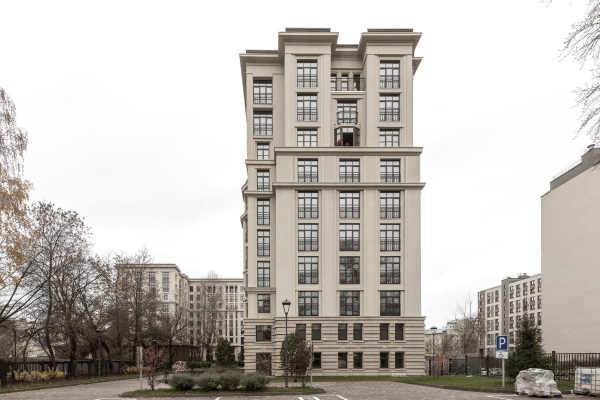 ID MoskovskiyCopyright: Photograph © Alexey Naroditsky / provided by Liphart Architects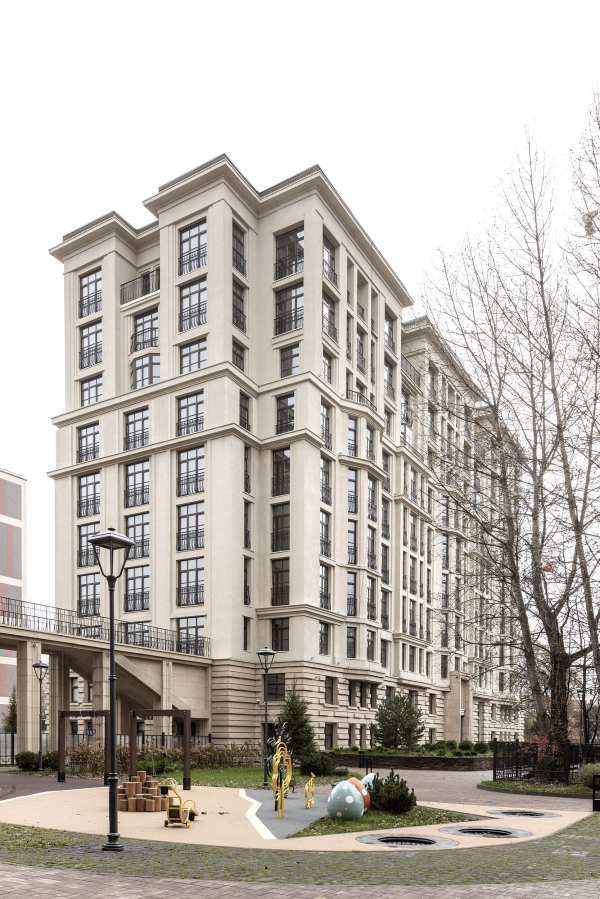 ID MoskovskiyCopyright: Photograph © Alexey Naroditsky / provided by Liphart Architects ID MoskovskiyCopyright: Photograph © Alexey Naroditsky / provided by Liphart Architects ID MoskovskiyCopyright: Photograph © Alexey Naroditsky / provided by Liphart Architects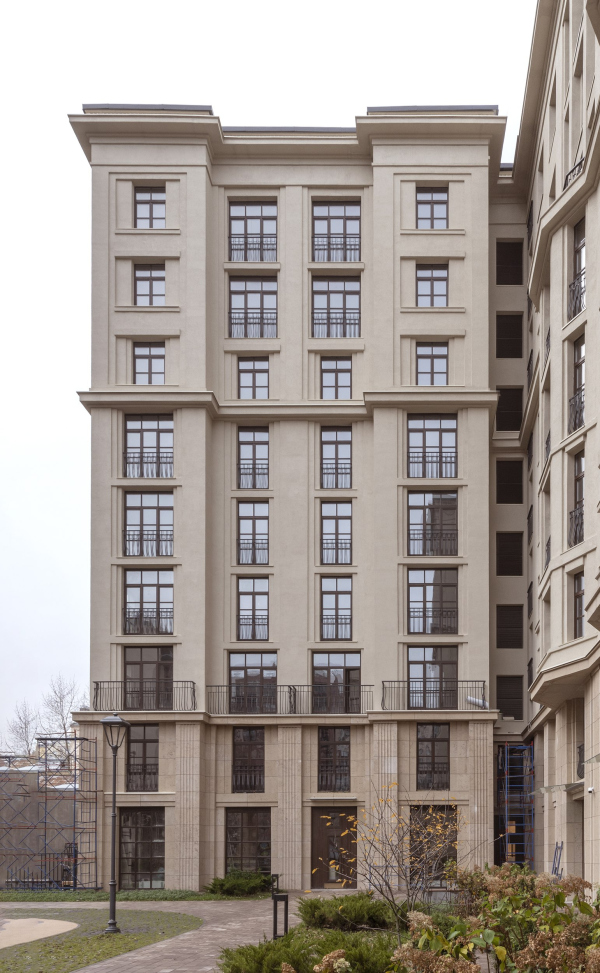 ID MoskovskiyCopyright: Photograph © Alexey Naroditsky / provided by Liphart Architects ID MoskovskiyCopyright: Photograph © Alexey Naroditsky / provided by Liphart Architects ID MoskovskiyCopyright: Photograph © Alexey Naroditsky / provided by Liphart ArchitectsIn space, the building is organized asymmetrically, yet still logically: two volumes of different lengths but with related three-risalite compositions, one facing west, the other east, stand parallel to Moskovsky Avenue. One, the longest, is perpendicular; the colonnade is also parallel. It forms a fragment of a system, internally directed like a molecule or crystal lattice, but placed in the somewhat chaotic environment of the courtyard. This construction, in terms of both axes and the balance of symmetry and asymmetry, somewhat resembles the plan of the nearby school designed by architect Alexander Lishnevsky back in the 1930s; they somehow, especially when viewed from above, resonate with each other, forming related fragments of the urban fabric – partly regular but not devoid of some playful “modernist” asymmetry. 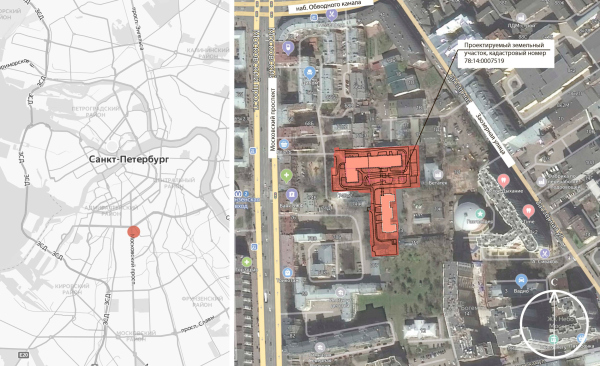 Location plan. ID MoskovskiyCopyright: © Liphart Architects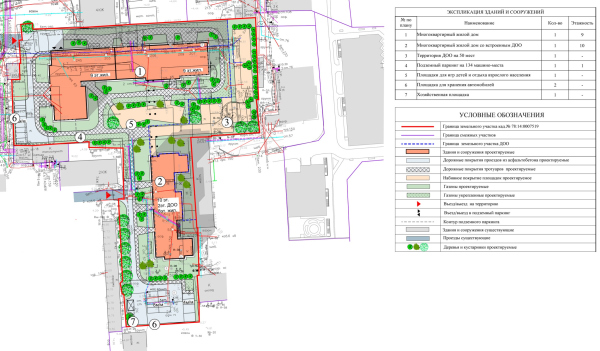 The master plan. ID MoskovskiyCopyright: © Liphart ArchitectsThis brings me back to the beginning. The rapid growth of “new life” beyond the Obvodny Canal mainly consists of energetic invasions in the city fabric: for the most part, these “new inclusions” claim a significant fragment of the city, completely reformatting it in accordance with their own needs. The tactic of “Moskovskiy”, however, is different. On the one hand, due to sheer circumstances (the plot is situated in the courtyard), and on the other hand, as a result of the architect’s choice of classical style, the complex deeply immerses itself in the context and develops the ideas found there. The new grows within the old, effortlessly capturing and developing its “design code”. This is a subtle and interesting way of interacting with the city. The market value of Art Deco here seems to rhyme, if I may say so, with the overall cultural value of classical architecture. Well yes, we are in St. Petersburg, after all! Here, every stump should grow into a column or an arch, though, regrettably, this isn’t always the case. |
|
